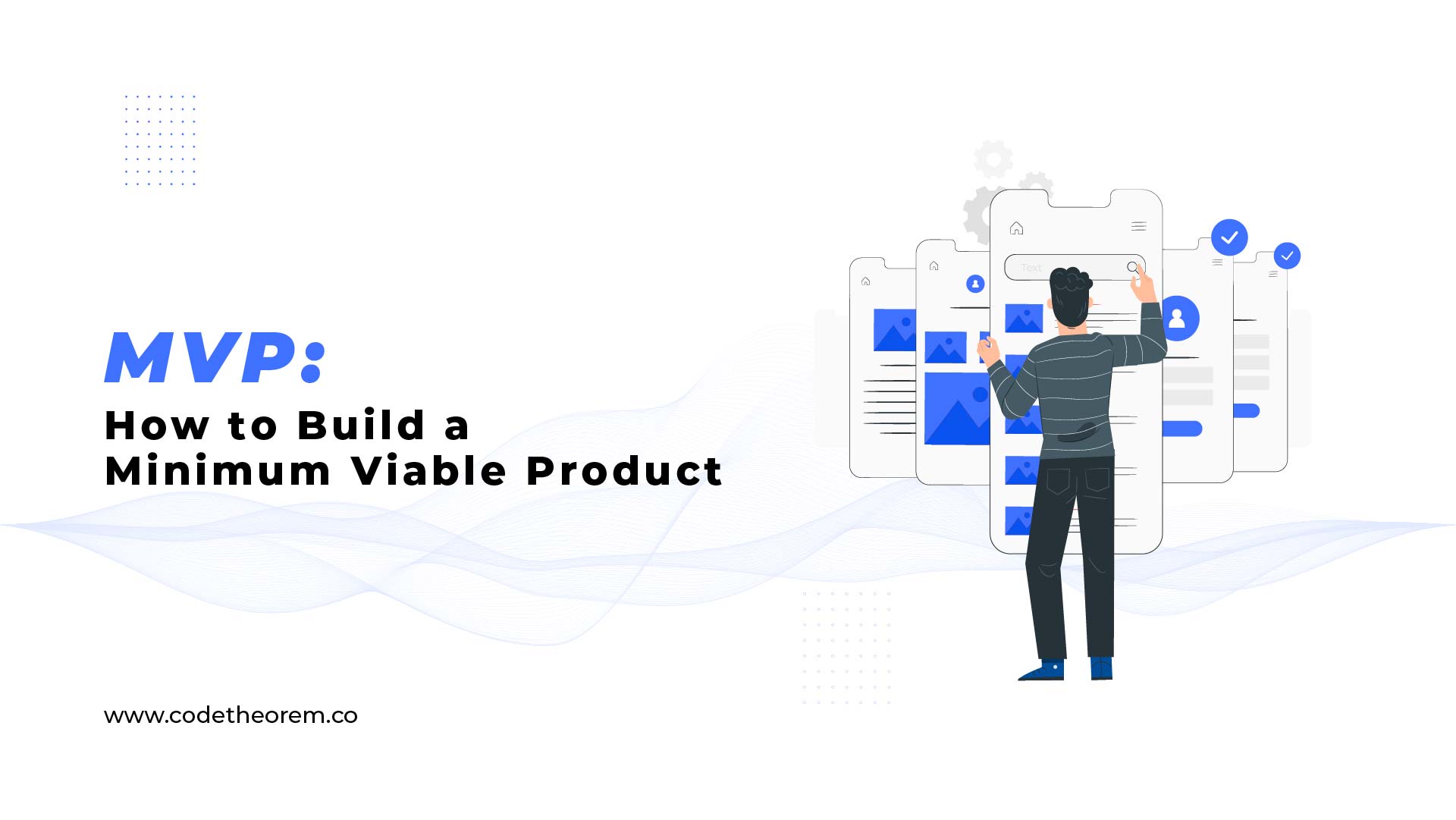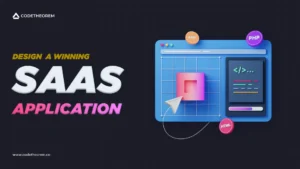The world is advancing at a rapid speed with most companies and brands highly investing in the product space, especially apps. However, do all apps receive an equally warm response from the audience? Absolutely not. As a founder, product manager, or anyone who wants to enter the mobile application space, you know that the process of building and launching an app boils down to how the end-users welcome it. So, how does one ensure that the product they want to launch will certainly be liked by their target audience? With the help of an MVP. And by that, we do not mean “Most Valuable Player.” So, what does MVP stand for? MVP stands for Minimum Viable Product.
Minimum Viable Product plays a crucial role in determining the product-market fit. It increases the chances of surviving the cut-throat competition in the world of mobile applications. In this blog, we will be covering the following topics :
- What is minimum viable product?
- Purpose and benefits of MVPs
- Process of building an MVP
Article content
What is MVP?
A Minimum Viable Product is integral to a new product development process. The meaning of minimum viable product (MVP ), simply put, is the most basic launchable version of an app supporting all the must-have features. These must-have features define your app’s value proposition.
Minimum viable product definition, according to Eric Ries
MVP is that version of a new product which allows a team to collect the maximum amount of validated learning about customers with the least effort.
Eric Ries
Once you create your MVP, you launch it in the market to see how the audiences respond to it. And once the initial feedback is in, you can fix the bugs, make necessary improvements, and introduce new features.
Purpose of an MVP
The fundamental purpose of creating an MVP is to launch an app that provides users with minimal yet must-have features to address their concerns. Besides this, there are a couple of more purposes that a minimal viable product serves. They are as follows:
1. Competitive Advantage at Low Costs
What if you enter the market with a full-fledged app, but it does not fare well? In that case, you will have wasted your time, money, and effort. A minimal viable product allows you to create a place in the mobile app industry with minimal development costs.
Entering early into a market with a product that offers minimal yet necessary features is no less than a launchpad. The time required is comparatively less, and so are the other resources. It has enough features to gain attention.
2. Minimize Losses and Avoid Failure
Since a Minimal Viable Product only has basic yet crucial features, the development costs are relatively low. Furthermore, MVP in product management allows you to win over the different situations relating to errors and weaknesses without suffering a loss. Besides, it also protects against potential failure by allowing you to analyze audiences’ responses and fix the bugs.
3. Reach Out to the Target Audience
An MVP product allows you to test if the product you have designed for a particular audience is well-received by them. You can reach out to your target audience by incorporating their feedback. Thereby ensuring that your audience actually likes your final product.
Advantages of Minimum Viable Product (MVP)
The advantages of an MVP are attractive, making it a must-see concept for product [[ companies. Following are some of the many benefits of MVPs in the new product development process:
1. Balances Company Objectives and User Needs
Every company has some objective set before starting the new product development process. However, are all the company objectives in favor of the users? The chances are not so likely.
MVP in product management helps strike a balance between the two. It aids in figuring out what your audience needs and thus finding a middle ground between offering and needs.
2. Insight Into Acceptance
An MVP agile lets you collect maximum-quality feedback from your target audience. And as we know, gaining customer feedback is pivotal for the growth of any business. Although collecting positive responses at this stage would be hard, you can’t undervalue the importance of negative feedback. In the end, they are the ones who will help you shape your final product.
3. Emphasis on Core Features
Focusing on core features and excluding additional or pro features helps paint a clear picture. You can be fully dedicated to building these core features, which also happens to be your value proposition.
4. Early Testing
Early testing is a huge advantage of MVP products. It enables you to predict how your strategy will fare in the real world without blowing your entire budget. With the feedback from the audience, you will still have the necessary resources, time, and money, to make the changes. Besides, once you know that your audience is accepting the core features well, it is always easier to introduce advanced features.
5. Evaluation and Validation
MVP aids in determining whether or not the service and product performance will be ideal for the target audience. Based on the amount of verified performance data, it will introduce users to your brand and demonstrate how unique your app is versus competitors in their consumer category. You will need to define minimum viable product criteria for effective measurement of MVP’s success.
6. Shorter Development Period
Building a full-fledged app is time-consuming. And even riskier when you do not know if the audience will accept it well. Creating MVP products is fairly easy since it only has the most basic yet important features. Plus, rapid development results in fewer costs. So that’s a win-win. But there is more. It allows you to launch your app early, making it easier to incorporate changes to enhance the user experience.
7. Cost-effective
Developing minimal yet must-have features not only takes lesser time but also lesser money. But that’s not all. It helps to disregard any expense on advanced features you will not need for some time.
How to Build a Minimum Viable Product?
After understanding what is a minimum viable product and its advantages, let’s look at how you can build MVP products. Find the minimum viable product checklist below:
1. Start With Market Research
Every new product development process begins with an idea. An idea to solve an existing problem. But at times, the ideas may not fit the current market needs. This is where market research comes into the picture. It will help you dig deeper into the current problems, find possible solutions, and check if your idea is compatible with them. This is the beginning of the minimum viable product life cycle.
You can also conduct surveys to gather your own data for analysis. In the end, your product should serve the need of the audience at large. Additionally, you must consider analyzing your competitor’s offerings, benefits, and shortcomings. Besides, the more data you have, the higher the chances of succeeding.
2. Define Your Idea & Identify the Critical Point
It is vital to have an idea that is unique in order to attract the audience. Only when you have something distinctive or something your competitors do not offer yet, can you get people to use your product?
Additionally, it’s important to find your value proposition. Trying to find answers to the following question can help you identify the value proposition of your MVP minimum viable product:
- Who are my target users, and what are their needs and demands?
- What is unique about my product?
- What problems does my product solve?
- How is it helping the audience?
- Is it adding value to their lives?
3. Design Process and User Flow
The next step is MVP design. Design your app from the users’ perspective. It needs to be simple to navigate and use. Ensure that your MVP design has a good flow. It should cover everything from the start to the end.
One way to ensure that your design has a smooth flow is to figure out the steps, from the problem to the solution or from the objective to the result. List down the steps and focus on the basic needs. This will make it easier to develop the MVP product.
4. Create the Pain-and-Gain Map
A pain-and-gain map simplifies the process of creating an MVP app. It identifies all the problems of the users and determines the area for the greatest value addition. The mapping techniques will help you prioritize the highest impactful points in your Minimum Viable Product roadmap.
5. Prioritize MVP Features
Since an MVP minimum viable product is the first thing your users will experience, it is vital to prioritize which features you want to include. The features need not be the most advanced. They have to be the ones that solve your target audiences’ needs.
Arrange these features as per the priority in your product backlog. Furthermore, if you want to see how your product will look in the near future, you may also create an MVP prototype.
6. Develop your MVP
A company can develop the MVP once it has determined the key characteristics and discovered the market’s demands. Remember that an MVP must still satisfy the demands of the consumer. It is not inferior to the final product in terms of quality. As a result, it must be user-friendly.
7. Test, Learn, and Repeat
After charting your MVP design and developing it, it is time to test how it works. The first step of testing is for quality assurance. This is conducted by Quality Assurance engineers. After this, launch your product in the market.
Once you launch your product, keep an eye on all the feedback you receive. Analyze them and introduce the necessary updates. Build on positive feedback and learn from the negative ones. Based on the audience’s response, tweak your design or features to enhance them. You may also ask customers what features they would like to see in the future. But remember one thing – keep your product simple and easy to use. Do not complicate it.
8. Measure Success
There are several ways to measure how your product is performing. You can analyze the audience response, check the number of downloads, and track mentions on social media. Furthermore, you may ask users to sign up for your product and check the number of active users. Lastly, calculate the CAC ( the money you spend on the traction channel and the customers you acquire from that channel). The above mentioned 8 step process is the answer to your question of how to build a minimum viable product.
Minimum Viable Product Examples
Many MVPs have turned into successful platforms. Some have become a necessity and a tool for other business activities. Following are some minimum viable product examples that went to become the benchmark in their respective domains:
In its starting years, the Facebook MVP was designed only to connect students via messaging and organize gatherings. Fast forward to today, a simple design to connect that received millions of feedback is a leading social media platform with 2.85 billion monthly active users.
Amazon
Originally designed to sell books online at a competitive price, Amazon only needed a web design based on the minimal viable product. Today, by introducing new features and updating the existing ones, Amazon is one of the most valuable retail brands. It is also the second band ever to hit the $1 trillion mark. Another successful minimum viable product example.
Dropbox
Dropbox did not actually launch an MVP right away. Its founder, Drew Houston, built a video based on the MVP, explaining to the audience how to use the application. This received a warm response and a whopping 70k email addresses from the target audience, giving the brand a signal to go launch their product.
Groupon
Groupon began as a WordPress-powered site where regular emails were shared with subscribed users. Leveraging the concept of selling vouchers and discounts with the internet to foster sharing and socializing, the company developed its backend. As of 2021, Groupon had 24 million active users.
The next on the list of minimum viable product examples is Twitter. Originally named “twttr,” its usage was solely for internal purposes. Employees, however, were spending a lot of money on SMS to publish to the site and test it with consumers. Consequently, the public received Twitter for the first time in 2006, becoming a hit. Today, it has 217 million monetizable daily users.
Conclusion
A Minimum Viable Product is of great use for startups, companies, or anyone who wants to launch an app of their own. Launching an app in the market comes with huge responsibilities and risks. Even more, if you choose to directly launch a full-fledged version. MVP saves you from the risk of failure by allowing you to test the waters.
With the aid of a functional product, the MVP strategy enables entrepreneurs to learn a lot about their consumers without wasting critical time and resources. After understanding what is MVP, its benefits, and the development process, creating MVPs should not be intimidating. Take help from specialists to ease the process. There is no successful minimum viable product template. The success mantra for MVP is its process.
Remember: It’s a process of developing, testing, learning, and updating.


















